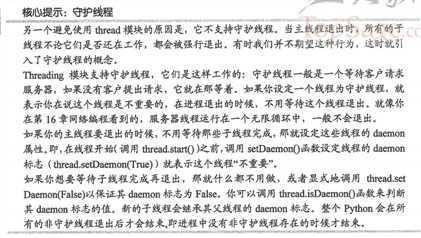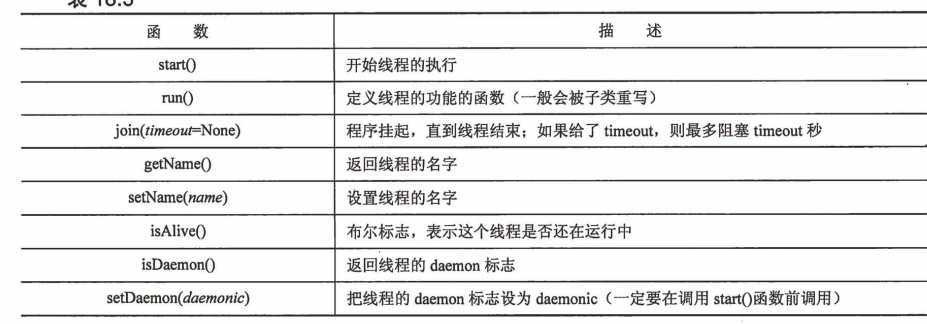标签:style blog http io 使用 ar for sp 2014
# -*- coding: utf-8 -*-
# python:2.x
__author__ = ‘Administrator‘
"""
python是支持多线程的,并且是native的线程。主要是通过thread和threading这两个模块来实现的。thread是比较底层的模 块,threading是对thread做了一些包装的,可以更加方便的被使用。这里需要提一下的是python对线程的支持还不够完善,不能利用多 CPU,但是下个版本的python中已经考虑改进这点,让我们拭目以待吧。
threading模块里面主要是对一些线程的操作对象化了,创建了叫Thread的class。一般来说,使用线程有两种模式,一种是创建线程要执行的 函数,把这个函数传递进Thread对象里,让它来执行;另一种是直接从Thread继承,创建一个新的class,把线程执行的代码放到这个新的 class里。我们来看看这两种做法吧。
"""
#例子1
import string, threading, time
def thread_main(a):
global count, mutex
# 获得线程名
threadname = threading.currentThread().getName()
for x in xrange(0, int(a)):
# 取得锁
mutex.acquire()
count = count + 1
# 释放锁
mutex.release()
print threadname, x, count
time.sleep(1)
def main(num):
global count, mutex
threads = []
count = 1
# 创建一个锁
mutex = threading.Lock()
# 先创建线程对象
for x in xrange(0, num):
threads.append(threading.Thread(target=thread_main, args=(10,)))
# 启动所有线程
for t in threads:
t.start()
# 主线程中等待所有子线程退出
for t in threads:
t.join()
# if __name__ == ‘__main__‘:
# num = 4
# # 创建4个线程
# main(4)
#例子2
class Test(threading.Thread):#主要以这种方式
def __init__(self,num):
threading.Thread.__init__(self)
self._run_num=num
def run(self):
global count,mutex
threadname=threading.currentThread().getName()
for x in xrange(0,int(self._run_num)):
mutex.acquire()
count = count + 1
mutex.release()
print threadname,x,count
time.sleep(1)
if __name__==‘__main__‘:
global count, mutex
threads=[]
num=4
count=1
#创建锁
mutex=threading.Lock()
#创建线程对象
for x in xrange(0,num):
threads.append(Test(10))
#启动线程
for t in threads:
t.start()
#等待子线程结束
for t in threads:
t.join()
Threading方法及属性说明
Thread 线程执行对象
Lock 锁对象
RLock 重新载入锁对象(递归锁定)
Condition 条件变量对象让一个线程停止下来,等待其他线程满足<某个>条件,如状态改变等
Event 通用条件变量,多个线程可以等待某个事件发生,在事件发生后,所有线程都会被激活
Semahore 等待锁线程提供一个类似‘等候室’结构
BoundedSemaphore 与Semahore 类似,只不过它不允许超过初始值
Timer 与Thread相似,只是它要等待一段时间后才开始运行


更多多线程学习请看:http://www.cnblogs.com/huxi/archive/2010/06/26/1765808.html
标签:style blog http io 使用 ar for sp 2014
原文地址:http://www.cnblogs.com/mhxy13867806343/p/3995163.html